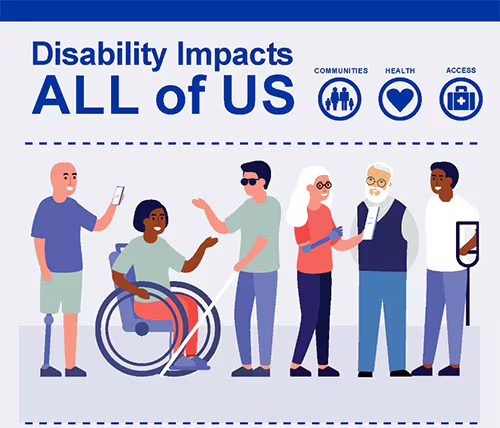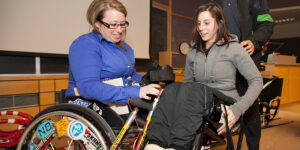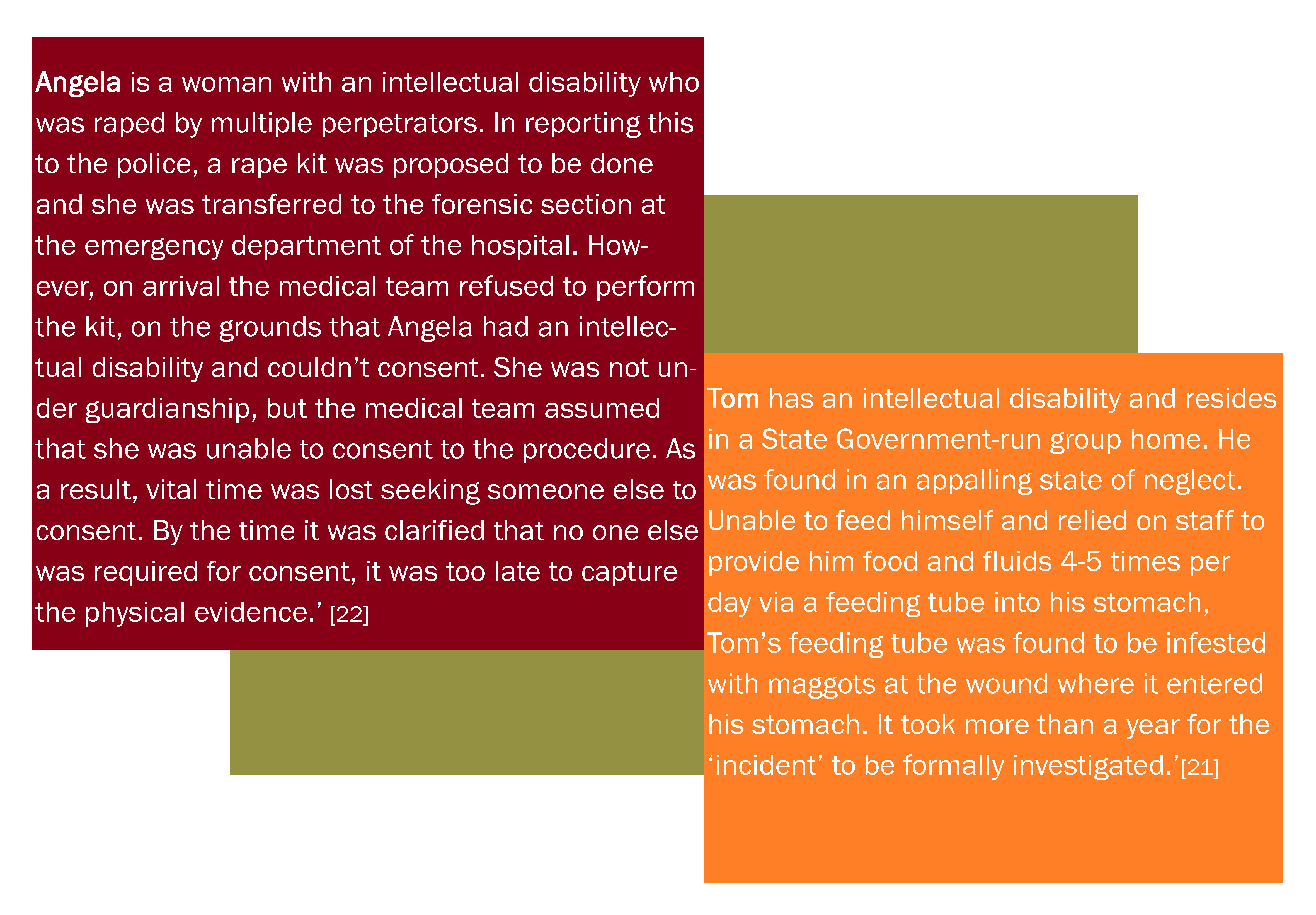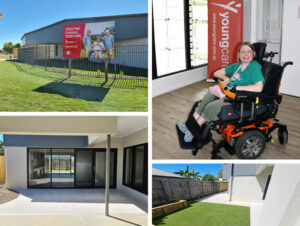According to the 2022 Australian Institute of Health and Welfare report there were 4 million Australians with a disability (18%). 1 in 8 Australians aged over 65 have a disability. States or Territories with older populations recorded a higher prevalence of disability. Some 5.7% of Australians had a profound or severe disability – that is, they always required assistance with core activities, in the case of the former, or, in the latter, they sometimes needed help, had difficulty being understood by friends or family, and could more easily communicate using sign language or other non-spoken language.[1]

Aboriginal and Torres Strait Islanders experienced disability at almost twice the rate of non-Indigenous people.[2] In 2023 it was estimated that 140,000 had severe or profound disability. However, these numbers are difficult to read because of the different cultural conceptions of disability amongst Indigenous groups.

What is it like living with disability?
There is no one experience of living with a disability – diversity is the unifying feature. Like all people, quality of life for Australians living with disability depends on many factors – family background, race, sex, age, location, education, language and cultural background, financial situation, talents and skills and so forth. The nature of the disability a person lives with will also affect some elements of their life experiences. Overall though, people with disability are at greater risk than the general population of experiencing persistent disadvantage across a range of common wellbeing markers.[6] If a person with a disability also happens to belong to another ‘vulnerable group’ such as being Indigenous, long-term unemployed, female, a public housing resident, elderly, a child, or a lone parent the disadvantage will be compounded.[7]

The most common barrier people with disabilities and their families is social exclusion and community participation.[8]
Violence and Abuse

There is growing evidence that women with disabilities experience domestic violence, both in their own private homes and in residential care facilities at a higher rate than women without disabilities. Further, research shows they often have unique experiences of domestic violence that require different responses, support and options for them to be able to leave and move on from dangerous situations. Extreme dearth of data on incidents of violence, abuse and neglect and on how the reports were followed up criminally or otherwise. In the case of criminal incidents, people with disability are poorly treated, unfairly represented and generally discriminated against and too often locked out of the justice system in Australia.
Discrimination and social exclusion
The Australian Institute of Health and Welfare 2022 report on ‘People with disability’ identified exclusion and negative social attitudes as major issues in their lives. They reported daily exclusion, segregation and marginalisation. At best, people said they were treated ‘differently’, as opposed to being treated negatively and with prejudice. Being denied quality and equal relationships and community participation means people become socially isolate. [11]
For Australians living with a disability aged between 15 and 65 almost 39% have had experienced discrimination because of disability. Employers were the main sources of discrimination at approximately 46% for unemployed and employed people alike.[12]
People with disability are painted as being ‘less than’ in Australian culture, and our lives are consequently regarded as less, and ‘other’.
-Senate Inquiry, p. 48
Work, Income and Education
Australia has ranked 21st out of 29 OECD countries in employment rates for people with disability. The rate of employment ( 80.6%) for those aged 15-64 remained steady in 2023 it is a figure that has changed little in the last twenty years.[13] In 2022 the rate of unemployment for those without disability is at 5.3%. The Australian Human Rights Commission found that many people with disability want to work and are capable of doing so in a whole range of ways, but are often denied the opportunity.[14]

People with a history of mental illness or intellectual disability were especially stigmatised. Aside from the costly effects the lack of employment has on wellbeing and economic prosperity, many people with disabilities and their families said they lived in ‘fear and desperation’ because they were despised by the community for living on the pension but faced huge barriers to get the support and employment they needed to get off it.[15]
Compounding the costs of unemployment are the often very high costs of living for people with disability and their families. This is because people often need increased healthcare, modifications to homes and cars, more expensive types of transport and insurance, and often also expensive health aids. This stretches already very tiny budgets for those on disability support payments.
Employment opportunities have been further limited because of the often poor-access to quality education for people with disability. Many Australians with disability and their families noted that the system had largely failed their children. Chronic underfunding, lack of expertise and negative attitudes all contributed to a poor education for children and young people with disabilities.

About 45% of Australians with a disability either live at or below the poverty line. This is 2.5 times the rate for the general Australian population.
Housing
As Australia is a signatory to the UN Convention on the Rights of Persons with Disabilities having access to adequate housing and the right to choose that housing and with whom it is shared are all rights enshrined in Australia.[16] However, the lived reality has been far from this. The type of housing people with disability live in and can access varies enormously based on family background, age, employment, location and type of disability. Nonetheless, people with disability are over-represented in housing assistance programmes and have significantly lower levels of home ownership than the general population. This is particularly the case for those who live with profound or severe disability.[17]
 Similarly, the specific cultural and geographic needs of Indigenous Australians with disability have made accessing adequate housing and being able to exercise choice especially difficult for this group; a group which generally is already over-represented in homelessness populations nationally. New research is providing much needed data and insight into this issue.[18]
Similarly, the specific cultural and geographic needs of Indigenous Australians with disability have made accessing adequate housing and being able to exercise choice especially difficult for this group; a group which generally is already over-represented in homelessness populations nationally. New research is providing much needed data and insight into this issue.[18]
Overall, there is a severe shortage of accommodation options and support for private housing options for people with disabilities across Australia. There is usually very limited choice or freedom for people to choose where they live. The lack of choice and support means many people are made increasingly vulnerable, and become victimised and abused in residential settings with little to no power to change their situation.[19]
Living with a profound or severe disability
Globally, people with a severe or profound disability and their families tend to experience greater disadvantage.[20] Australians with a severe disability and their families met only sub-standard outcomes on every indicator of community participation and wellbeing. Only half progress past year 10 at school compared with 80% for the general population. As low as one-tenth (in comparison to the general population) have opportunities to participate in social life outside the home.

Primary carers tend to be in the poorest two-fifths of all households and 55% rely on income support as their main form of income. Carers have the lowest level of wellbeing of any community group studied. In some cases the only way for people to get the help they need is for carers (usually parents) to relinquish the care of their adult children so that care can be obtained before the carer dies.[21] This is a particularly shocking problem and a significant one given that the individuals aged 25-64 were living with their parents.
More Information and Getting Involved
- To learn what the Church teaches about disability click here.
- For more information and to get involved click here.
*NB: In Australia, the two main survey instruments are the ABS Census and the Survey of Disability, Ageing and Carers (SDAC). The ABS also does a range of other surveys on specific aspects of disability, health, caring and ageing.
Sources: All original data is embedded in the text or footnote reference, please follow these links to be redirected to the original source or further information.
